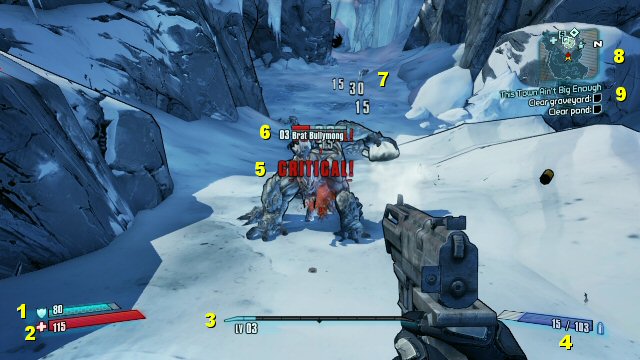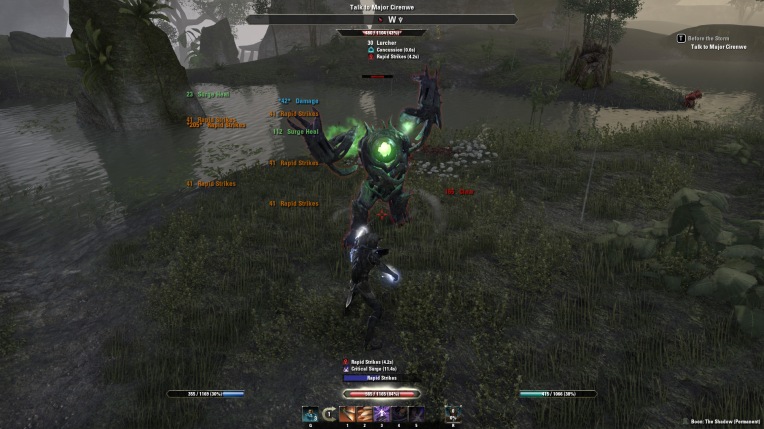Our second assignment is related to game HUDs. A HUD is the “Heads Up Display” that is onscreen during gameplay, of which can be broken up into three different types. Permanent, Pull-Up and Actioned HUDs have different purposes and are integral to a good user experience. The Permanent HUD is always on and displays things like abilities, health bars and mini-maps etc.
The Pull-Up HUD however involves elements that are only shown when the user interacts with something in the game world or HUD; an example of this would be your equipment selection screen pop-up or looting options when mousing over a fallen foe.
Actioned HUDs are quite similar to Pull-Up HUDs with the difference being the user has no control over them appearing and are instead triggered by certain circumstances or events. An example of an Actioned HUD would be words appearing on the screen when your ultimate is ready, like Battlerite. Another Actioned HUD element would be blood splatters or condition effects appearing on your screen when inside combat such as in Borderlands 2.
Here is a mood board of various HUDs:

Here is a breakdown of a couple of the games featured above and their HUD types.
Battlefield 1: Battlefield 1’s HUD is usually Permanent, with elements including mini-map, ammunition, squad members and health. Recent kills fall under Actioned HUD and interactions with objects/vehicles where mousing over them causes a button prompt to appear and a single word explanation of what that action will do.

WoW: The Permanent HUD of WoW includes many elements. Abilities, health/mana bars, character portrait, bags and the HUD artwork/design itself. The equipment and character stat menu can be brought up via a button press, which qualifies this as part of the Pull-Up HUD, another example of part of the Pull-Up HUD would be clicking on an enemy’s corpse to loot it, which brings up a display showing what items were dropped. The Pull-Up HUD also includes interactions with NPCs where text and various options are displayed once clicked upon. The Actioned HUD in WoW includes de-buff icons that may appear during combat and telegraph icons that some enemies display before doing special attacks.
Borderlands 2: Borderland’s Permanent HUD is usually wrapped around the character’s view as if it is being displayed to the character as well. Health, shield and shield bars, ammo and mini-map are displayed within that Permanent HUD. The Pull-Up HUD includes interactions with NPCs, much like in WoW, where text or other options are displayed. The Actioned HUD in Borderlands 2 includes damage numbers, status effects/de-buffs and critical hit notifiers inside of combat, much like WoW. Borderlands shares many similarities with MMORPGs in regards to their looting, statistics/character developments and damage numbers/notifiers.

Dark Souls 3: Dark Souls HUDs are usually quite minimalistic, allowing you to be immersed in the game world. Health, Magic and Stamina bars, your equipment and your souls collected are part of the Permanent HUD of Dark Souls 3; however there is an option to cause your Permanent HUD to fade out when outside of combat and can be bought back by swinging your weapon or using equipment. Status effects comprise a large part of the Actioned HUD, that and the notification of your death with the iconic YOU DIED screen.
ESO:

Battlerite:

Overwatch:

Images used for reference and mood boards were found online.



